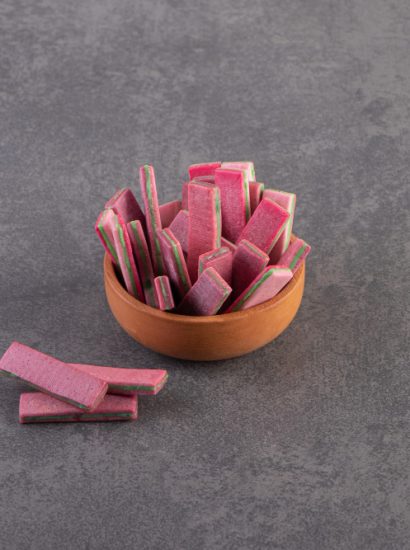The moon lily flower is one of nature’s most enchanting blooms. Known for its delicate white petals, intoxicating fragrance, and night-blooming nature, this flower has long been associated with mystery, romance, and spirituality.
Also called the moonflower or Ipomoea alba, the moon lily belongs to the morning glory family and opens its blossoms in the evening, glowing under moonlight. Its magical beauty makes it a favorite in gardens, weddings, and cultural traditions worldwide.
In this article, we’ll explore everything about the moon lily flower — its meaning, types, symbolism, and tips for growing and caring for it.
What Is the Moon Lily Flower?
The moon lily is a tropical, perennial vine that produces large, trumpet-shaped, white flowers. It is often called moonflower due to its nocturnal blooming habit.
- Scientific name: Ipomoea alba
- Family: Convolvulaceae (morning glory family)
- Native regions: Tropical and subtropical areas of the Americas
- Blooming time: Evening through night, closing by morning
Key Features
- Large, pure white blossoms (4–6 inches wide)
- Sweet fragrance, especially strong at night
- Heart-shaped green leaves
- Vigorous climbing vine, growing 10–30 feet tall
Symbolism of the Moon Lily Flower
Flowers often carry deep meanings, and the moon lily is no exception.
Purity and Innocence
Its white blossoms represent purity, making it popular in weddings and spiritual ceremonies.
Mystery and Transformation
Blooming under moonlight, it symbolizes mystery, rebirth, and cycles of life.
Love and Romance
The moon lily is linked to romantic symbolism, often given as a gift to express devotion.
Spiritual Awakening
In some cultures, the flower is seen as a symbol of spiritual enlightenment and the connection between the earthly and divine.
Types of Moon Lily Flowers
Though Ipomoea alba is the most common, other related flowers are sometimes called moon lilies:
- Ipomoea alba (True Moonflower)
Large white, night-blooming blossoms.
- Datura inoxia (Sacred Moonflower)
Also called thorn apple; similar trumpet-shaped flowers.
- Eucharis amazonica (Amazon Lily)
Sometimes referred to as “moon lily” for its glowing white blooms.
Growing Moon Lily Flowers
Moon lilies are relatively easy to grow, making them perfect for gardeners who want a fragrant evening garden.
Planting
- Climate: Thrive in warm, frost-free regions (USDA Zones 9–11).
- Soil: Well-drained, moderately fertile soil.
- Sunlight: Full sun to partial shade.
Care Tips
- Watering → Keep soil consistently moist but not waterlogged.
- Support → Provide a trellis, fence, or arbor for vines to climb.
- Fertilization → Use balanced fertilizer every 4–6 weeks.
- Pruning → Trim vines to encourage more blooms.
Propagation
- Grow easily from seeds.
- Nick the seed coat and soak overnight before planting for better germination.
Moon Lily Flower in Culture and Traditions
The moon lily has found a place in art, literature, and cultural rituals:
- Romantic Gardens → Popular in Victorian gardens as a symbol of evening romance.
- Wedding Symbolism → Used in bridal bouquets for purity and devotion.
- Spiritual Practices → In some traditions, seen as a flower of meditation and moon rituals.
- Literature & Poetry → Symbol of mystery, night beauty, and fleeting love.
Benefits of Growing Moon Lily Flowers
- Aesthetic Beauty → Large glowing flowers enhance nighttime gardens.
- Fragrance → Sweet scent creates a calming atmosphere.
- Attracts Pollinators → Especially moths and night pollinators.
- Low Maintenance → Hardy, fast-growing vine.
Moon Lily Flower vs. Morning Glory
While they belong to the same family, moon lilies and morning glories differ:
| Feature | Moon Lily (Ipomoea alba) | Morning Glory (Ipomoea purpurea) |
| Bloom Time | Night | Morning |
| Color | White | Purple, blue, pink |
| Fragrance | Strong, sweet | Light to none |
| Symbolism | Mystery, purity, romance | Renewal, joy, beginnings |
Conclusion
The moon lily flower is more than just a plant — it’s a symbol of mystery, purity, romance, and spiritual awakening. Its ability to bloom under moonlight sets it apart, making it a unique and meaningful addition to gardens worldwide.
Whether you admire it for its fragrance, symbolism, or beauty, the moon lily is a timeless flower that connects us to nature’s cycles and the quiet magic of the night.
FAQs
1. What is the meaning of the moon lily flower?
It symbolizes purity, romance, mystery, and spiritual transformation.
2. Is the moon lily the same as a moonflower?
Yes, Ipomoea alba is commonly known as the moonflower or moon lily.
3. When does the moon lily bloom?
It blooms in the evening and night, closing by morning.
4. Can I grow moon lilies indoors?
They thrive best outdoors, but you can grow them indoors in containers with enough sunlight.
5. Are moon lily flowers poisonous?
Yes, parts of the plant can be toxic if ingested, so keep away from pets and children.
Also read: EO Deodorant: Natural, Organic, and Effective Body Care









